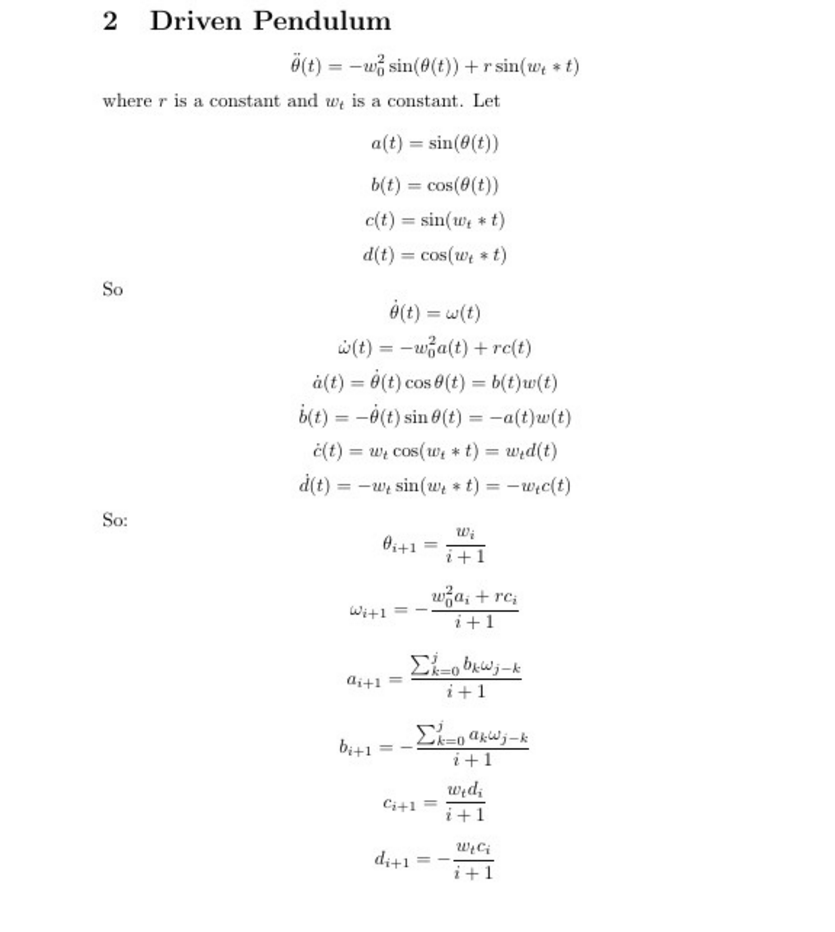In the last blog, I covered how to solve the motion of a “Simple Pendulum” using the Parker-Sochacki method. To use it in Houdini, I had to convert between Rectangular coordinates and Polar coordinates because I am updating the angular displacement of the simple pendulum. I would take the angular displacement and covert that value into x and y values to update in the scene view of Houdini. This blog is solving a driven pendulum. I am putting everything together in one image from Latex. This shows the new Ordinary Differential Equation and how it was solved using the Parker-Sochacki method.
The coefficients are then used to create a power series for all of the terms.
You will see that the driven pendulum will not simply swing back and forth. Adding drive will cause the pendulum to have different oscillations. The oscillations will get smaller and then larger again. Parker-Sochacki was set to order 10 and a time step 5x longer than 1/24 so you can see this more clearly. The higher order made it possible to take a larger time step and not have the simulation collapse. I demonstrated this in the previous blog with the simple pendulum.